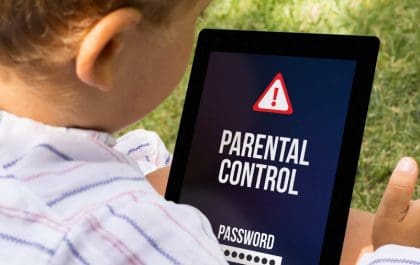Asthma affects people of all ages. While it often starts during childhood, it can occur later in life from exposure to irritants. Asthma is a long-term lung problem. It causes lungs to react in an extreme way when irritated. Irritants of the lung are called triggers. A trigger can cause the muscles of the lungs to tighten, swell and create excess mucus. As a result, breathing becomes difficult, resulting in a shortness of breath and coughing.
How do I find out if my child has asthma?
Asthma is diagnosed in young children by looking at signs and symptoms. Therefore, your child’s health history is important information the doctor will need in order to make a diagnosis. Particularly, what happens when your child is ill, when and how often he/she has trouble breathing and if breathing improves when given bronchodilator medicine.
Three things must occur if asthma is truly your child’s problem:
- Breathing problems will occur more than once.
- The problems get better after using certain medicine (bronchodilators). Bronchodilators relax tight muscles in the lungs.
- All other reasons are ruled out. Acid reflux, vocal cord problems or heart problems can all look like asthma.
Allergy tests can be done to identify specific triggers. Some children with asthma have many allergies while other children may have only a few or none at all. Every child is different.
A pulmonary function test (PFT) can also be done. This test measures how well air moves into and out of the lungs. Your child will need to breathe hard into a tube for about six seconds for the test.
How does a child get asthma?
Asthma can:
- Be inherited from a close family member.
- Result from heavy exposure to triggers, such as pollution or second-hand smoke. If smoke is constantly present in a home, a child’s lungs can stay swollen and irritated all the time.
- Appear after a serious RSV virus infection (bronchiolitis).
What triggers asthma?
Different children react to different triggers. Some will have many triggers. Some may have only one or two. Surprisingly, there are often more triggers indoors than outside.
In addition to second-hand smoke and pollen, other common triggers can be:
- Mold
- Pets or other animals
- Strong odors
- Intense emotions
- Hot or cold air
- Pollution
- Lung infections
- Sinus infections or allergies
- Chemical fumes
When exposed to a trigger, three things happen in the lung:
- Lung muscles tighten (bronchospasm).
- The lung makes extra mucus (phlegm).
- Airway walls swell with fluid (edema).
These three problems make airway openings very small. Small airways located deep in the lung may even swell shut. Oxygen can have trouble getting through the lungs and into the blood.
How do I protect my child from triggers?
- Learn your child’s triggers. This can be the most important thing you do for your child. You must know what your child needs to protect them.
- Avoid your child’s triggers whenever possible. Help everyone who cares for your child know what to avoid.
- Try cleaning your home before anything else, especially your child’s bedroom. This is the room your child spends the most time in every day.
Asthma will not go away. However, with proper care and knowledge, your child can enjoy a healthy and active childhood. Learn more by visiting www.etch.com/asthma to read Children’s Hospital’s asthma handbook.
Related posts
Newsletter Subscribe
Newest Posts
Set Up a Parental Control for Online Safety
Have you ever wondered how long your children spend in front of a device without your supervision? Yes, it is…
Adopt A Life, Save A Life
By Jeff Ashin, CEO, Young-Williams Animal Center. Photo by: Young-Williams Animal Center Are you or your child thinking of adding…

